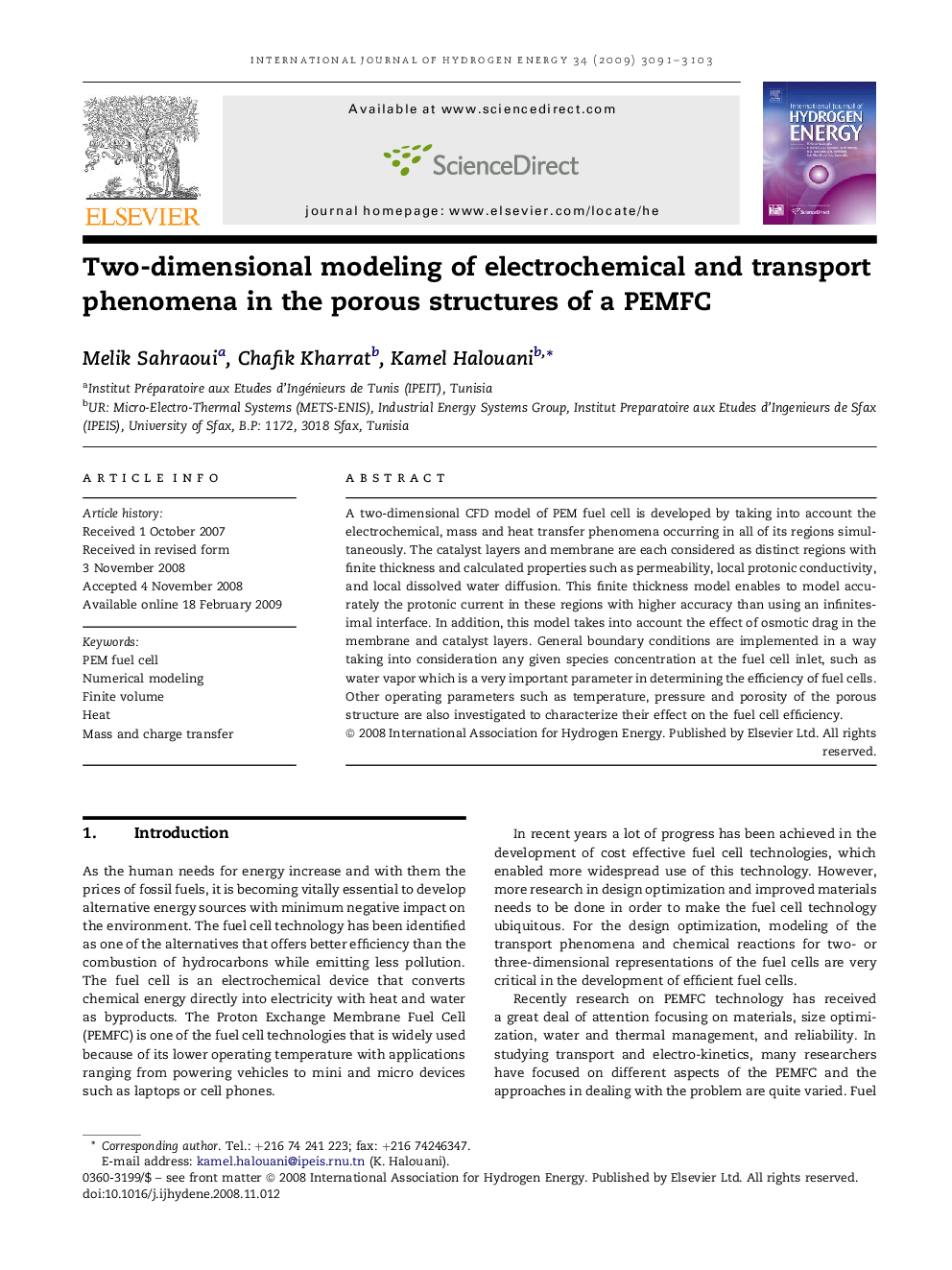| Article ID | Journal | Published Year | Pages | File Type |
|---|---|---|---|---|
| 1283243 | International Journal of Hydrogen Energy | 2009 | 13 Pages |
A two-dimensional CFD model of PEM fuel cell is developed by taking into account the electrochemical, mass and heat transfer phenomena occurring in all of its regions simultaneously. The catalyst layers and membrane are each considered as distinct regions with finite thickness and calculated properties such as permeability, local protonic conductivity, and local dissolved water diffusion. This finite thickness model enables to model accurately the protonic current in these regions with higher accuracy than using an infinitesimal interface. In addition, this model takes into account the effect of osmotic drag in the membrane and catalyst layers. General boundary conditions are implemented in a way taking into consideration any given species concentration at the fuel cell inlet, such as water vapor which is a very important parameter in determining the efficiency of fuel cells. Other operating parameters such as temperature, pressure and porosity of the porous structure are also investigated to characterize their effect on the fuel cell efficiency.
